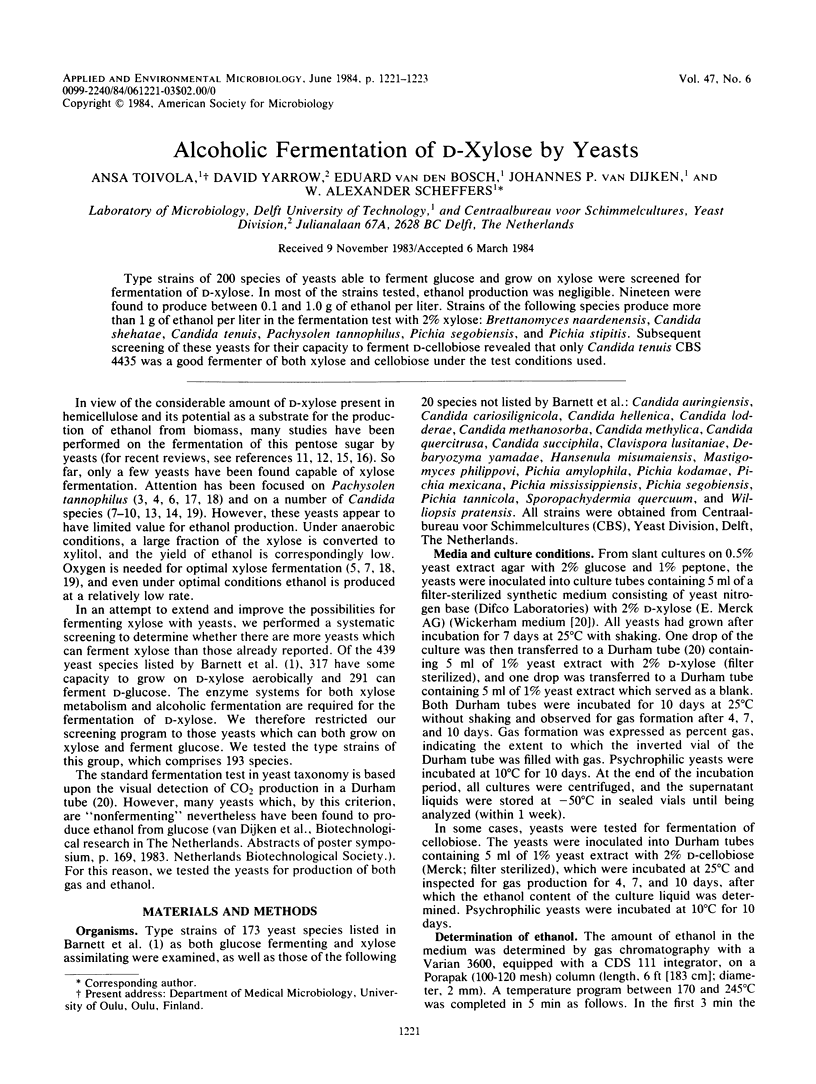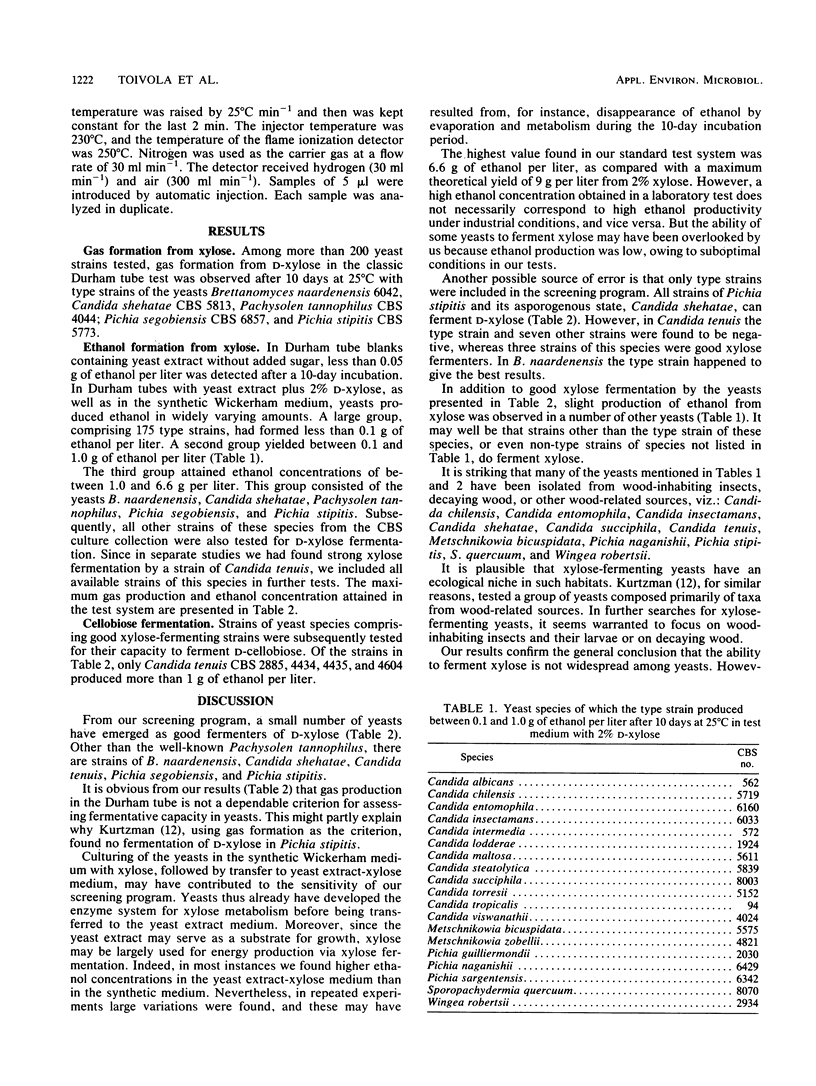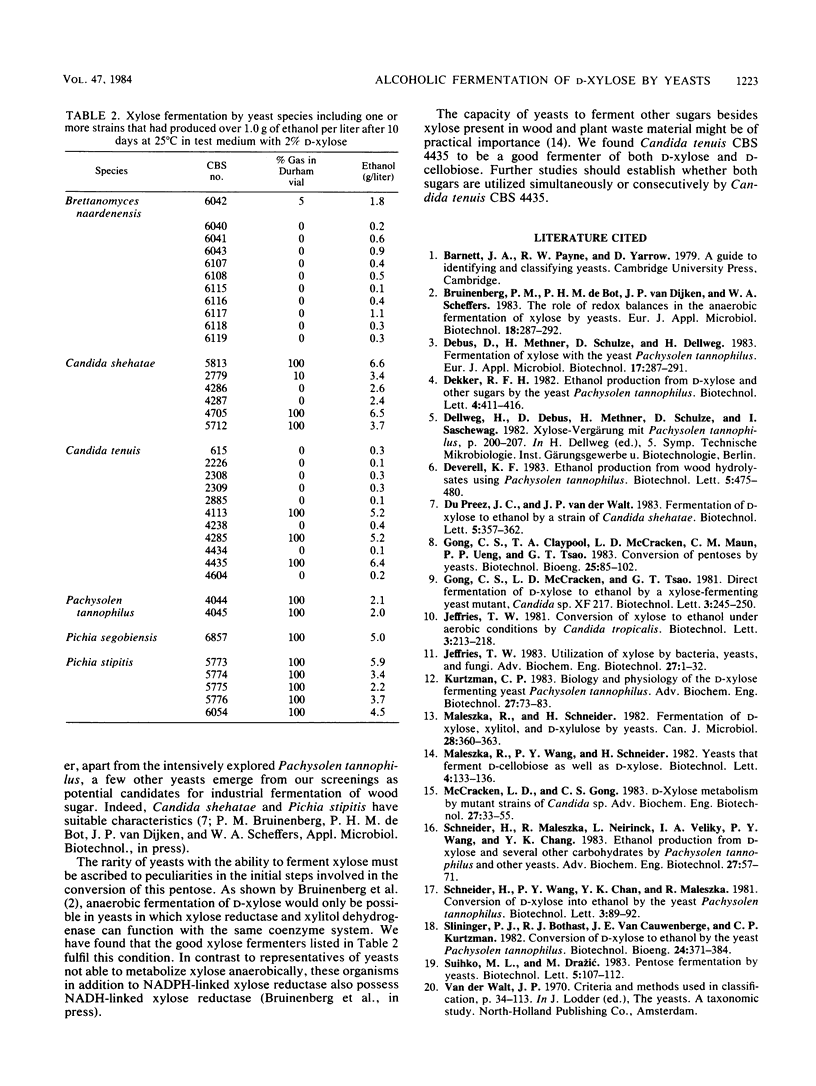Abstract
Type strains of 200 species of yeasts able to ferment glucose and grow on xylose were screened for fermentation of d-xylose. In most of the strains tested, ethanol production was negligible. Nineteen were found to produce between 0.1 and 1.0 g of ethanol per liter. Strains of the following species produce more than 1 g of ethanol per liter in the fermentation test with 2% xylose: Brettanomyces naardenensis, Candida shehatae, Candida tenuis, Pachysolen tannophilus, Pichia segobiensis, and Pichia stipitis. Subsequent screening of these yeasts for their capacity to ferment d-cellobiose revealed that only Candida tenuis CBS 4435 was a good fermenter of both xylose and cellobiose under the test conditions used.
Full text
PDF


Selected References
These references are in PubMed. This may not be the complete list of references from this article.
- Jeffries T. W. Utilization of xylose by bacteria, yeasts, and fungi. Adv Biochem Eng Biotechnol. 1983;27:1–32. doi: 10.1007/BFb0009101. [DOI] [PubMed] [Google Scholar]
- Maleszka R., Schneider H. Fermentation of D-xylose, xylitol, and D-xylulose by yeasts. Can J Microbiol. 1982 Mar;28(3):360–363. doi: 10.1139/m82-054. [DOI] [PubMed] [Google Scholar]
- McCracken L. D., Gong C. S. D-Xylose metabolism by mutant strains of Candida sp. Adv Biochem Eng Biotechnol. 1983;27:33–55. doi: 10.1007/BFb0009102. [DOI] [PubMed] [Google Scholar]


